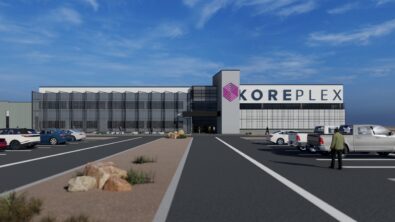Digitalization will connect more than technology

The digital twin is, at its core, a virtual representation of a physical object or product. Though that may sound simple, achieving a true depiction of an object or product in the virtual world requires connecting data and models from multiple engineering domains that each represent some aspect of the product’s form, behavior, properties, and so on. It is the connection of these various technologies, such as 3D CAD models, simulations (e.g., thermal and CFD, electrical, process automation, finite element analysis, etc.), real world test results, and more that enables the digital twin to accurately replicate or predict the attributes of the physical product. But is this the whole picture?
Discussion on the digital twin and digitalization tends to focus very heavily on technology. Industrial software companies talk a lot about integrating engineering and process domains, data continuity, systems engineering, and more. We also talk about all the benefits that connecting these domains, technologies, and processes can deliver to an organization: faster time-to-market, lower costs, fewer mistakes, and greater capacity for innovation. But connecting these domains, processes, and technologies, at some level, requires connecting people as well. Engineering, information technology, manufacturing, and any other domain affected by digital transformation are all made up of people, all working hard and doing their job to the best of their abilities. What often gets lost is how the value delivered by the digital twin and digitalization, in many ways, is enabled by the connection of many individuals and the work they produce.

Connecting these various people is difficult. The many technical domains that go into a modern product all speak their own ‘languages’, have different goals and concerns regarding the product, and complete their work in unique environments. Over time these divisions have lead to the oft discussed ‘silos’ between engineering disciplines, process domains (design, manufacturing, etc.) and organizations that hamper product development and optimization. As products become more integrated – with software, hardware, networks, and various mechanical and electromechanical systems all working together – innovation is increasingly the product of collaboration among engineers from multiple domains.
At the end of the day, digitalization must help individuals perform their roles more easily and effectively. One of the most impactful ways it can do this is by connecting people on a global scale to promote collaboration, innovation, and the generation of new ideas and new solutions to industry challenges. This is about sharing ideas, understanding other points of view, and finding the best path forward by forging new connections between designers, manufacturing engineers, electrical engineers and more. Creating a common internal language and universal connections between tools is, therefore, beneficial for both technologies and the people that use them.
As a result, investment in the digital twin and digitalization can catalyze an entire organization towards future innovation. The goal is to establish a foundation, such as with the Xcelerator portfolio, on which an organization and its people can grow, adapt, and innovate to meet the challenges of developing tomorrow’s products and solutions. While such efforts can product near-term results, such as increasing production efficiency or reducing the number of physical prototypes built, digital transformation can also enable companies to develop new revenue streams, build entirely new business models that are optimized for an increasingly online world, and enhance internal processes to become more adaptable to new product requirements or other market changes. Early success in this world will be measured by the change in behaviors deep within your organization. And, as opportunities to measure product and process performance on new terms emerge, you will find new performance indicators to track the value you are delivering to customers more accurately.


